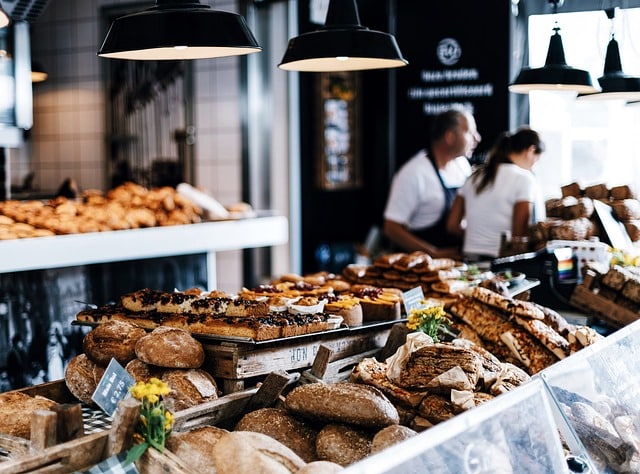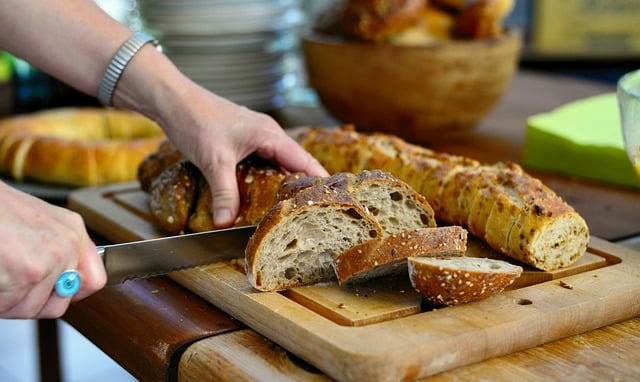Have you ever dreamed of turning your love for baking into a profitable business? Imagine waking every day to the smell of freshly baked goods, knowing you’re doing what you love while making money from home. Starting a bakery business from home is an exciting venture and a smart way to enter the food industry with lower startup costs and flexible hours. But where do you even begin?
If you’re ready to transform your passion for baking into a successful business, you’re in the right place! This guide will walk you through every step, from setting up your home bakery to marketing your products and scaling your business. Whether you’re looking to bake cupcakes for friends or run a full-fledged bakery from your kitchen, the journey starts right here. Let’s dive into how you can start your own home-based bakery business today!
What is a Home Bakery Business?
A home bakery business is a creative and passion-driven venture where individuals transform their love for baking into a profitable enterprise from the comfort of their homes. It blends artistry and entrepreneurship, allowing bakers to craft homemade, high-quality, and personalized baked goods while maintaining flexibility, low overhead costs, and a direct connection with customers.
Unlike commercial bakeries, a home bakery emphasizes authenticity, handcrafted excellence, and community engagement, making it a unique fusion of culinary skill and small-scale business innovation.
Related Posts:
- 23 Sure Offline home-based business ideas for beginners in Nigeria.
-
Comprehensive Guide to Starting a Home-based Daycare Business in Nigeria: For Beginners
- How to Start a Small Jewelry-making Business from Home in Nigeria
-
23 Sure Offline home-based business ideas for beginners in Nigeria.

Steps on How to Start a Bakery Business from Home
Starting a bakery business from home involves some necessary steps you have to follow to be successful in the long run, here are the procedures:
Step 1. Market Research and Business Planning
Before you start baking up a storm, it’s crucial to understand the market you’re entering. Start by doing some market research to find out what people in your area like to buy. Are they into classic cupcakes, custom cakes, or healthier options like gluten-free baked goods? Look at your competitors, and other local bakers, and see what they offer. This can help you identify gaps in the market that you can fill with your unique products.
Once you’ve gathered your market research, the next step is to create a business plan. A business plan doesn’t have to be complicated, but it helps you set clear goals and guide your business. Include details like your target market, pricing strategy, and how you plan to market your bakery. This plan will be your roadmap as you start building your business and will help keep you on track.
Step 2. Legal Considerations and Business Registration
Starting a bakery means more than just baking delicious treats, it also involves some legal steps. First, you’ll need to make sure your home bakery complies with local health and safety regulations. Many areas have specific rules about running a food business from home, such as kitchen inspections and food safety certifications. Take time to research your local food safety laws and obtain any necessary permits.
You’ll also need to register your business. This may involve choosing a business name and filing for a business license. If you’re planning to sell online or across state lines, you’ll need to make sure you meet all the legal requirements for your area. Don’t forget to consider tax laws, knowing what taxes you’ll be responsible for is key to running a smooth operation.

Step 3. Setting Up Your Home Bakery
Now that you’ve got the legal side figured out, it’s time to set up your kitchen for baking success. A clean, organized, and efficient kitchen is crucial for running a successful home bakery. You don’t need a fancy, commercial-grade kitchen, but you should have the essential tools like a reliable oven, mixers, measuring tools, and a workspace to decorate your baked goods.
Make sure to arrange your kitchen so that it’s easy to move from one step to the next. For example, keep your baking supplies close to the oven, and set up a designated area for decorating cakes or cupcakes. This will help streamline your production and ensure that everything runs smoothly when you start getting orders.
Step 4. Budgeting and Pricing Your Products
When it comes to running a bakery, you need to know exactly how much it costs to make your products. This includes the price of ingredients, packaging, utilities (like gas and electricity), and your time. Once you have a clear understanding of your costs, you can start pricing your products.
Keep in mind that pricing isn’t just about covering costs, but it’s also about making a profit. Research what other bakeries in your area charge and try to find a sweet spot where your products are affordable but still allow you to make a living. It’s also a good idea to track your expenses and adjust prices as needed to maintain a healthy profit margin.

Step 5. Building Your Brand and Marketing
Your brand is more than just your logo, it’s the personality of your business. Creating a strong, memorable brand is essential for standing out in a competitive market. Start by thinking about what makes your bakery unique. Do you use local ingredients? Are you known for custom cakes? Make sure this shines through in your brand’s identity.
When it comes to marketing, social media is your best friend. Create Instagram and Facebook accounts where you can post beautiful pictures of your products. Use hashtags, engage with followers, and consider running promotions to build your audience. You can also create a website to take orders online and share your bakery’s story. Word of mouth is another powerful tool, so don’t hesitate to ask satisfied customers to spread the word to their friends and family.
Step 6. Selling and Distribution Strategies
Once your bakery is up and running, it’s time to think about how you’ll deliver your products to customers. If you’re starting small, you can offer local delivery or pickup options. You can also partner with delivery services like Uber Eats, Chowdeck, or Supermart, depending on your location.
When selling your products, make sure they’re beautifully packaged. Customers love receiving baked goods that look as good as they taste. Consider custom packaging with your bakery’s logo, and always ensure the packaging keeps your baked goods fresh during transport.
Step 7. Customer Service and Managing Orders
A key to success in the bakery business is providing excellent customer service. Be friendly, responsive, and professional when communicating with your customers. This will help build loyalty and potential customers and encourage repeat business. Always be transparent about your pricing and delivery times.
When it comes to managing orders, be organized. Use an order management system or a simple calendar to keep track of what you need to bake and when. As your business grows, consider investing in software that will help automate parts of the order process. This will help you stay on top of orders and ensure nothing falls through the cracks.

Step 8. Growth and Scaling Your Home Bakery Business
As your home bakery gains popularity, you may want to start thinking about how to grow your business. This could mean adding more products to your menu, increasing production, or even hiring help. When scaling, it’s important to maintain the quality of your products, don’t expand too quickly if it means compromising your standards.
One option to consider is offering catering for events like weddings, birthdays, and corporate gatherings. You could also explore moving to a larger commercial kitchen or opening a small storefront if demand for your products continues to rise.
Financial Tips for Long-Term Success
Running a bakery is not just about baking; it’s about managing your finances well. Keep a close eye on your income and expenses, and make sure you’re saving for future growth. Consider setting aside a portion of your profits for reinvestment, whether it’s for new equipment, marketing, or expanding your product range.
You should also keep track of seasonal fluctuations. For example, you might have a busy holiday season, but slower months in between. It’s important to plan and have a financial cushion to help you through lean periods.

Common Challenges and How to Overcome Them
Like any business, running a home bakery comes with its challenges. You might struggle with time management, balancing baking with other responsibilities, or dealing with fluctuating orders. One way to overcome these challenges is by staying organized and setting realistic goals. If you’re overwhelmed, don’t hesitate to ask for help, whether it’s bringing in family members, hiring part-time workers, or outsourcing delivery.
Legal issues can also be a headache. Make sure you’re staying up to date with local regulations to avoid any penalties or shutdowns. Always stay informed about any changes in food safety laws or business permits.
How to Start a Bakery Business from Home Frequently Ask Questions and Answers
1. Do I need a commercial kitchen to start a bakery business from home?
No, you don’t need a commercial kitchen to start a home bakery, but your kitchen must meet local health and safety regulations. Many home bakeries operate successfully with residential kitchens as long as they comply with the necessary permits, health inspections, and food safety standards. It’s important to check your local laws regarding home-based food businesses.
2. How much does it cost to start a bakery business from home?
The cost to start a bakery business from home can vary widely depending on factors like equipment, ingredients, and legal fees. However, compared to opening a storefront bakery, starting from home can be much more affordable. You may need to budget for essential equipment like an oven, mixer, baking tools, packaging materials, and the necessary permits and licenses. On average, you can expect to spend anywhere from a few hundred to a few thousand dollars to get started.
3. How do I find customers for my home bakery?
Finding customers for your home bakery involves a mix of local marketing and building an online presence. Start by offering samples to family, friends, and neighbors, and encourage them to spread the word. Social media platforms like Instagram and Facebook are great for showcasing your products with mouthwatering photos and engaging with potential customers. Additionally, word-of-mouth referrals and collaborating with local businesses or events can also help grow your customer base.
4. Can I operate my home bakery legally?
Yes, you can operate a home bakery legally as long as you follow local regulations. This includes getting the appropriate business licenses, health permits, and food safety certifications. Some areas have specific zoning laws that regulate where home-based food businesses can operate, so it’s essential to check with local authorities. Make sure you also stay on top of tax obligations and any other legal requirements specific to your location.
Conclusion
Starting a home bakery business is a rewarding and exciting venture, and with the right approach, you can turn your passion for baking into a thriving business. From market research to customer service, every step plays a role in your success. The key is to stay organized, be patient, and always focus on delivering quality products that your customers will love.
As you grow, remember to keep refining your skills, expanding your offerings, and, most importantly, enjoying the journey. So, what are you waiting for? Get baking and turn your dreams into reality!


